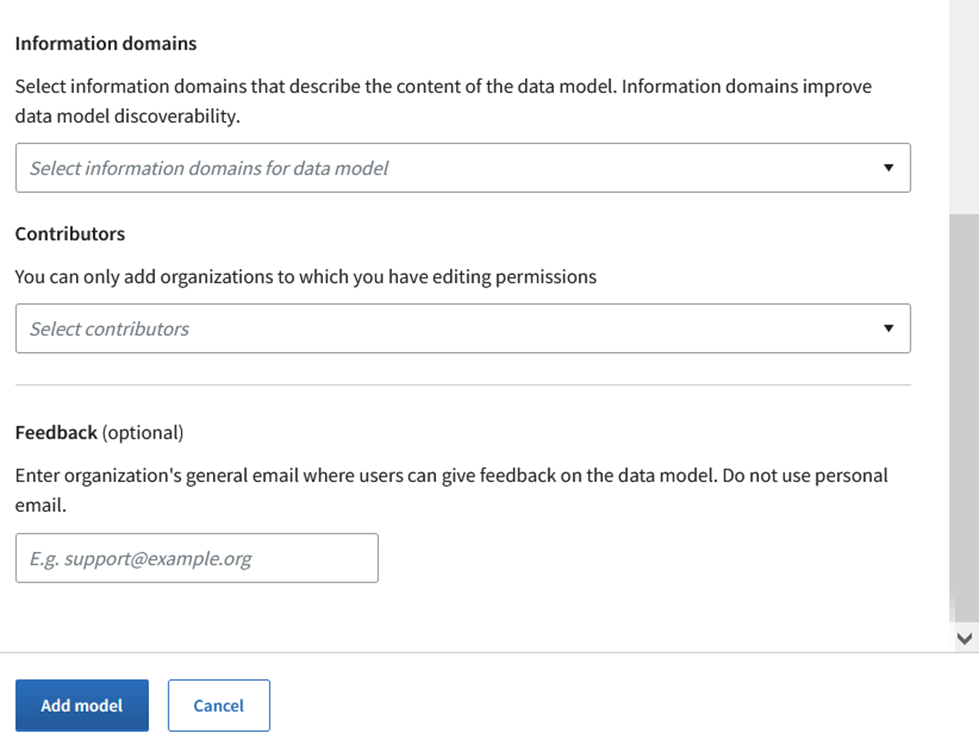...
Name of the data model | The field is only shown after the languages for the information content has been chosen. Every language has its own name field. The name is shown in the lists and the search results.
|
Description (optional) | The field is only shown after the languages for the information content has been chosen. Every language has its own name field. Assign a short verbal description of the content of the data model and its intended use.
|
Prefix (identifier) | A string of characters that is used for identifying the data model in the Data Vocabularies Tool. Note! The prefix cannot be changed later!
|
IRI preview | A function to visualise how the chosen prefix is shown as part of an IRI-address. For example: https://iri.suomi.fi/model/xyz123/. |
Information domains | Information concerning which information domain(s) the data model belongs to.
|
Contributors | Information on the contributor (organisation) which has created the data model and is responsible for maintaining its content.
|
Feedback (optional) | The contact information for the contributor organisation by which the users can send feedback and questions regarding information content etc.
|
...
